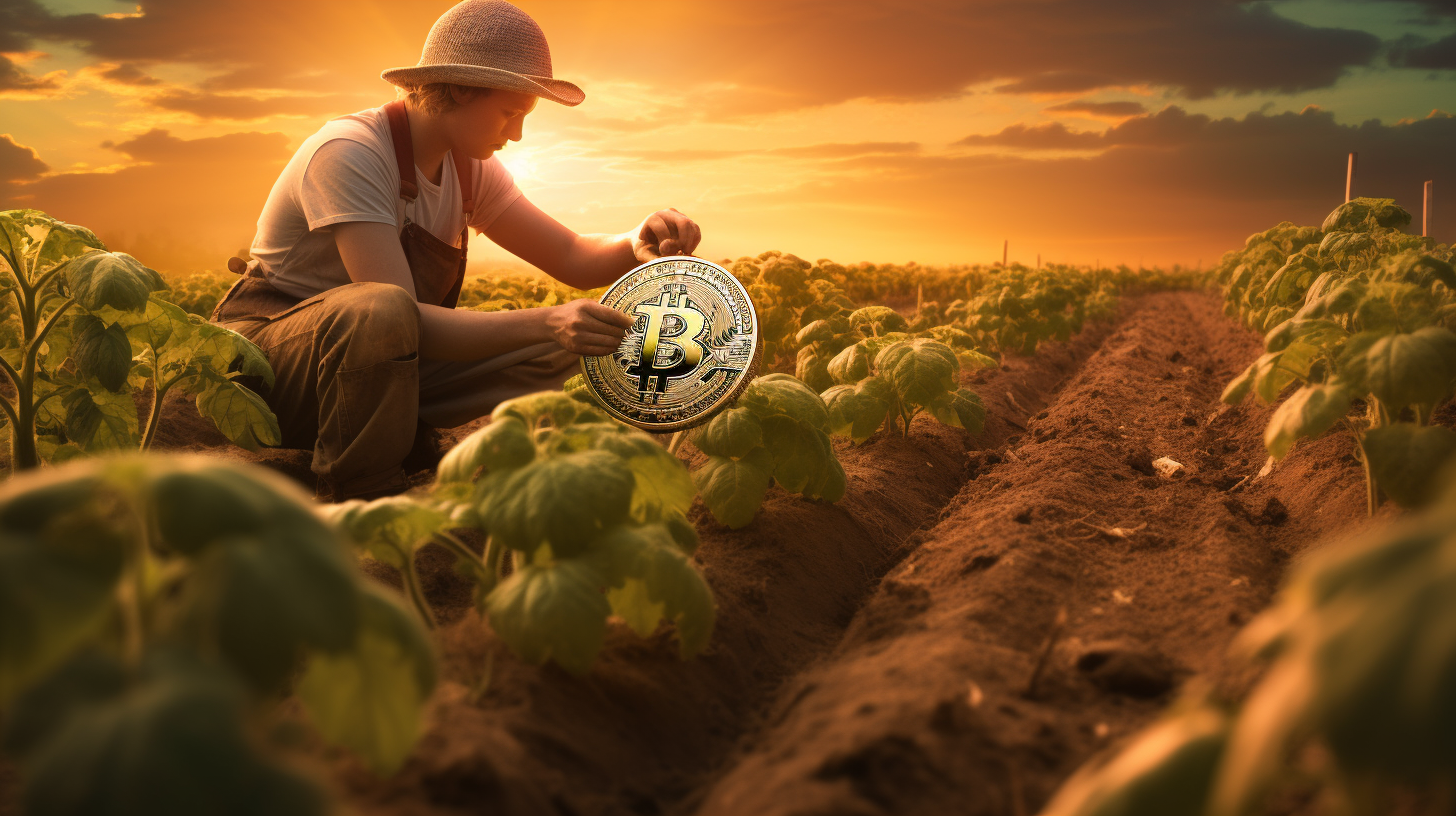In the blossoming fields of the digital currency-driven agronomy, a new trend is emerging that’s poised to revolutionize how we cultivate our crops and nourish our nations: crypto-educated farming practices. Imagine a farmer not only skilled in the age-old arts of agriculture but also fluent in the language of blockchain and cryptocurrencies. This is no longer a future vision; it’s a reality unfurling right before our eyes.
As we delve into this fascinating convergence of knowledge domains, it’s clear that the seeds planted by integrating cryptocurrencies in agriculture, as seen in our previous discourse on Rural Revival, have taken root. Adding to this is the innovative concept of the Universal Learning Ledger, injecting the principles of decentralized and perpetual education into myriad sectors, including farming.
Imagine a decentralized platform dedicated entirely to the agriculture sector, a place where farmers can access the latest research on crop rotation, soil health, and sustainable pest control. Let’s call it the Decentralized Agriculture Knowledge Base (DAKB). Here, farmers can consume bite-sized pieces of information, mastering complex concepts through micro-credentials and earning digital badges that serve as a testament to their newly acquired knowledge.
The DAKB would be more than just an online course repository; it would be an interactive and real-time updated manual for best practices in agriculture. Such information is not just theoretical, it’s eminently practical. Imagine a farmer applying learnings about new biopesticides and sharing results back into the ledger. This kind of socio-agronomic feedback system is where crypto and farming truly integrate.
The most immediate benefit is the smart farming techniques informed by real-time data analytics and decision-making tools empowered by blockchain technology. Farmers can now adjust watering schedules based on predictive models of weather patterns secured through smart contracts, accessible only due to the blockchain’s transparency and security.
This model could also enable peer-to-peer learning networks that don’t just end within a community. A farmer in Peru, employing unique methods to cultivate quinoa, could share insights with a counterpart in Nepal, working to optimize millet production—all through a global, blockchain-based platform. Meanwhile, the sustainable practices incentivized by carbon credit tokens, mentioned in our Rural Revival discussion, gain an additional layer of sophistication when coupled with a crypto-educated approach to farming.
Now, let’s add another layer: the financial. Farmers using the knowledge from the DAKB to increase their yield and sustainability can tokenize their operations via agro-tokens. Consequently, investors who want to support sustainable practices can invest directly in these tokens. The intellectual enhancement through the DAKB becomes a solid financial asset that can be bought, sold, or traded.
The future also holds the possibility of the DAKB dovetailing with technologies such as remote sensing and artificial intelligence to predict crop yields and further de-risk investments in agriculture. Farmers could then take out insurance policies or loans with much more favorable terms, as their risk profile is significantly lowered by their adherence to the best practices outlined in the DAKB.
Yet, while the horizons are indeed broad and bright in this crypto-educated agricultural landscape, we must not overlook the looming clouds of challenges such as technological accessibility, digital literacy, and the still-present volatility in the crypto markets. These need to be addressed to ensure that the tools and knowledge are not confined to the hands of the few but are distributed like the seeds of progress across every furrowed field worldwide.
In conclusion, the amalgamation of crypto-education and farming is not just creating a new wave of agriculturists, it’s cultivating a future where farms can blossom into techno-cultural habitats. The marriage of these sectors is only in its honeymoon phase, and as time goes on, we can expect to see an even greater fusion of these now indelible parts of our society’s progress.
